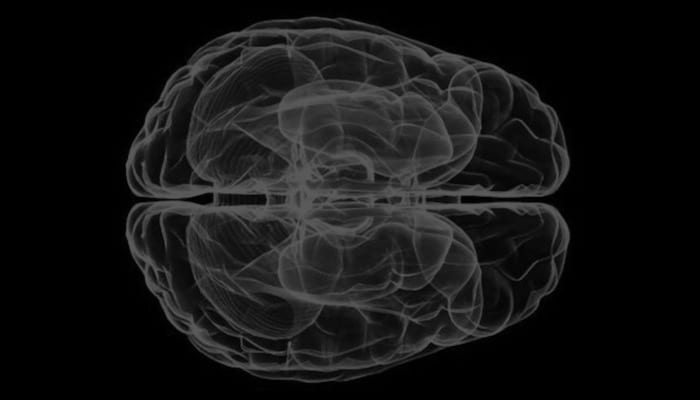Brainstem lesions
aka Neurological Mind-boggler 003
Here are some scenarios to try out Gates’ Brainstem Rules of 4 (original figures and re-imagined images)
Scenario 1
You are examining a patient with sudden onset left-sided weakness. These are your clinical examination findings:
- weakness of the left upper and lower limbs, with sparing of the face.
- tongue deviation to the right, with no ophthalmoplegia.
- loss of vibration and proprioception in the left upper and lower limbs.
Questions
Where is the lesion?
Answer and interpretation
- weakness of the left upper and lower limbs, with sparing of the face:
- motor (corticospinal pathway) localises the lesion to the contralateral medial brainstem
- (sparing of the face (CN7) means the lesion must be below the upper pons)
- tongue deviation to the right, with no ophthalmoplegia:
- tongue deviation indicates CN12 involvement, localising the lesion to the ipsilateral medulla
- (sparing of CN3 and CN6 means the midbrain and pons are not involved)
- loss of vibration and proprioception in the left upper and lower limbs:
- confirms localisation of the lesion to the contralateral medial brainstem
Site of the lesion: right medial medulla.
Sometimes, due to the peculiar pattern of blood supply to the medulla, bilateral infarction may occur.
Scenario 2
You are examining a patient with sudden onset right-sided weakness. These are your clinical examination findings:
- weakness of the right face, upper and lower limbs.
- the left eye is turned “down and out” and the pupil is dilated.
Where is the lesion?
Answer and interpretation
- weakness of the right face, upper and lower limbs:
- motor (corticospinal pathway) localises the lesion to the contralateral medial brainste
- (involvement of the face means the lesion must be at or above the upper pons)
- the left eye is turned “down and out” and the pupil is dilated:
- CN3 involvement, localising the lesion to the ipsilateral midbrain
- (sparing of CN6 and CN12 means the pons and medulla are not involved)
Site of the lesion: left medial midbrain.
A CN3 palsy (from damage to the CN3 nerve fascicle) and contralateral hemiplegia is known as Weber syndrome (“basal” infarction) – which can be difficult to distinguish from ‘coning’ if you don’t have a CT scanner available.
Scenario 3
You are examining a patient with vertigo, vomiting, and nystagmus. These are your clinical examination findings:
- left-sided limb ataxia.
- left-sided alteration of pain and temperature on the face.
- left-sided ipsilateral Homer’s syndrome.
- right-sided alteration of pain and temperature affecting the arm and leg.
- dysarthria and decreased gag reflex on the left, with the palate pulling up on the right-side
Where is the lesion?
Answer and interpretation
- left-sided limb ataxia:
spinocerebellar pathway localises the lesion to the ipsilateral lateral brainstem. - left-sided alteration of pain and temperature on the face:
Sensory nucleus of the 5th cranial nerve localises the lesion to the ipsilateral lateral brainstem. - left-sided ipsilateral Homer’s syndrome:Sympathetic pathway localises the lesion to the ipsilateral lateral brainstem.
- right-sided alteration of pain and temperature affecting the arm and leg:
Spinothalamic pathway localises the lesion to the contralateral lateral brainstem. - dysarthria and decreased gag reflex on the left, with the palate pulling up on the right-side:
localises the lesion to the medulla affecting the ipsilateral CN9 and 10.
Site of the lesion: left lateral medulla.
Also known as Wallenberg syndrome, caused by a left vertebral or left posterior inferior cerebellar artery occlusion (blood supply is variable to this region).
Scenario 4
You are examining a patient with right-sided deafness, that was preceded by tinnitus. These are your clinical examination findings:
- right-sided limb ataxia (predominantly affecting the right upper limb).
- right-sided facial numbness with loss of the corneal reflex.
- right-sided hemi-facial spasms.
Where is the lesion?
Answer and interpretation
- right-sided limb ataxia (predominantly affecting the right upper limb):
- spinocerebellar pathway localises the lesion to the ipsilateral lateral brainstem.
- right-sided facial numbness with loss of the corneal reflex:
- Sensory nucleus of the 5th cranial nerve localises the lesion to the ipsilateral lateral brainstem.
- right-sided hemi-facial spasms:
- the lesion involves the pons affecting the ipsilateral CN7.
Site of the lesion: The findings indicate a lesion affecting the right lateral pons with evidence of spinocerebellar involvement.
In this case the lesion was not vascular in origin but in fact an example of a cerebellopontine angle lesion – an acoustic neuroma (or schwannoma). This demonstrates the broader utility of Gates’ Brainstem Rules of 4
References
- Gates P. The rule of 4 of the brainstem: a simplified method for understanding brainstem anatomy and brainstem vascular syndromes for the non-neurologist. Internal Medicine Journal 2005; 35: 263-266
- Goldberg S. Clinical Neuroanatomy Made Ridiculously Simple. MedMaster Series, 2000 Edition.
- Patten J. Neurological Differential Diagnosis. Springer-Verlag.
LITFL
- Brainstem Rules of 4 (original rules)
- Helpful Brainstem Figures (original figures)
- The rule of 4 of the brainstem (Rules re-imagined)
- A spider called Willis
- Using the Brainstem 1
- Using the Brainstem 2
- The Magic of the Neuro Exam
- Look Left, Look Right (Internuclear Ophthalmoplegia)
- More Befuddling Pupillary Asymmetry (Horner Syndrome)

Neurological Mind-boggler
Chris is an Intensivist and ECMO specialist at The Alfred ICU, where he is Deputy Director (Education). He is a Clinical Adjunct Associate Professor at Monash University, the Lead for the Clinician Educator Incubator programme, and a CICM First Part Examiner.
He is an internationally recognised Clinician Educator with a passion for helping clinicians learn and for improving the clinical performance of individuals and collectives. He was one of the founders of the FOAM movement (Free Open-Access Medical education) has been recognised for his contributions to education with awards from ANZICS, ANZAHPE, and ACEM.
His one great achievement is being the father of three amazing children.
On Bluesky, he is @precordialthump.bsky.social and on the site that Elon has screwed up, he is @precordialthump.
| INTENSIVE | RAGE | Resuscitology | SMACC
